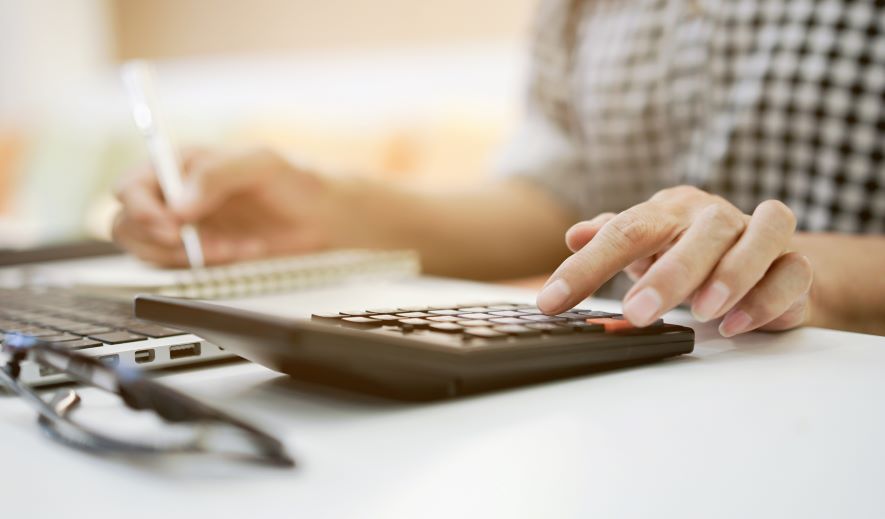You know your small business like the back of your hand. You’ve dedicated hours to its layout and organization, but do you feel the same about your balance sheet?
A recent survey found that 40% of small businesses don’t hire an accountant or bookkeeper. This means they handle their finances on their own. By better understanding balance sheets, you can blast through your accounting at a more efficient rate. But first, you’ll need to understand each account on your balance sheet.

What Are Balance Sheet Accounts for a Small Business?
As a small business owner, you’re probably familiar with using folders—and maybe even file cabinets—to keep your documents organized. Your balance sheet uses a similar system, only instead of folders, it’s separated by different accounts. So, what accounts appear on a balance sheet?
Your balance sheet accounts list, will include:
- Cash. This is the cash you receive during regular transactions at your business. For instance, when you sell inventory and receive payment, this is documented in the cash account. Your cash account will be listed as a current or short-term asset on your balance sheet.
- Deposits. As a small business, you may have placed security deposits before. You do this when you are giving someone else money to hold against future charges. These are often referred to as “Security Deposits Receivable.” Security deposits are considered current assets on your balance sheet.
- Intangible assets. These are nonphysical assets. Patents, copyrights, customer lists, literary works, and broadcast rights are all common examples. These are listed as current assets on your balance sheet.
- Short-term investments. These investments get converted into cash within one year. They’re also recorded in the current assets section of your balance sheet.
- Accounts receivable. This involves the money your customers owe you for products or services that they have received but have not paid for yet. These are documented as assets on your balance sheet.
- Prepaid expenses. These include transactions for which payments have been made in advance. For example, you may pay rent on a commercial space before you use it. This transaction, as well as your other prepaid expenses, would be recorded as an asset on your balance sheet.
- Long-term investments. These are typically investments that do not get converted into cash within one year. They can include stocks, bonds, real estate, and sometimes cash. Your long-term investments are recorded on the asset side of your balance sheet.
- Accounts payable. This is the amount of money you owe suppliers or creditors. Your accounts payable are current liability accounts on your balance sheet.
- Accrued expenses. These can include wages, interest, utilities, repairs, bonuses, and taxes. These are considered liability accounts.
- Credit card. If you have a credit card for just your small business, you’re not alone. This is a common practice. Purchases made with credit cards are recorded as liability accounts on your balance sheet.
- Short-term debt. This account is shown in the current liabilities portion of your balance sheet. This encompasses any debt that is due within one year. One example of short-term debt is payroll taxes.
- Long-term debt. This is debt that will not be due within one year. Examples include bonds payable, long-term loans, lease obligations, or convertible bonds. These are recorded in the liabilities section of your balance sheet.
- Equity. Owners’ equity is a separate section of the balance sheet. This section includes the par value of stock, amounts paid in capital, and your retained earnings.
What Are Balance Sheet Accounts Receivable?
Your customer transactions are important. They fuel your business. So, as you’re creating and analyzing your balance sheet, pay close attention to your accounts receivable because this is money your business is owed. As mentioned earlier, these represent payments that your customers owe you after buying goods or services on credit. For example, say you own a landscaping business. After you fix up a customer’s yard, you send them an invoice. In turn, at a later date, they send back a payment for the services provided.
Accounts receivable, like the one you’d receive in the landscaping example above, are current assets. This is because they are expected to be converted into cash within one year’s time.

What Are Balance Sheet Accounts Payable?
You already know that the money that flows into your business is just as important as the money that flows out. Therefore, it’s important to keep a close eye on your accounts payable, as these are payments you owe to other businesses.
Your accounts payable are, in fact, other business’s accounts receivable. For instance, say your small business runs out of essential inventory earlier than expected. You quickly contact your supplier and buy more inventory on credit from them. After the crisis is averted and your shelves are restocked, you receive an invoice for payment. This payment is considered an accounts payable (and is an accounts receivable for the supplier). You’re legally obligated to pay it in a timely fashion to your supplier.
How to Reconcile Balance Sheet Accounts
You’ve probably reconciled with others before, but you may not have reconciled a balance sheet. To begin, know that reconciling your balance sheet involves comparing your balance sheet accounts to another source.
For many small business owners, this source is their bank statement. However, you’ll want to keep in mind that these statements only apply to balance sheet cash accounts. To compare your accounts receivable, accounts payable, and fixed asset transactions, you can use your subledger.
This comparison is important for small business owners like you, because it allows you to make sure your balance sheet is correct. You want your accounts to match up. If they don’t, you could have problems in the future. That being said, comparing your balance sheet can allow you to catch mistakes early. Sometimes these mistakes can be as simple as a typo or transposed digits in a number.
As you go through the reconciling process, you’ll want to keep a list of what makes up each balance sheet account. This can help you stay organized. These lists are:
- Fixed assets
- Individual prepaid expenses that total the amount of prepaids
- Accounts receivable and accounts payable that tie out to the balance sheet
Your balance statement should be reconciled at the end of a month, quarter, or yearlong period. The timing is up to you as the small business owner. However, reconciling your balance sheet as a part of your closing process is considered a good idea.
Once you’ve determined that your balance sheet is accurate, then you can easily and confidently use it to make future financial decisions.

What Is a Budgeted Balance Sheet?
You’re no stranger to budgets. Every business has one. Regardless of how high or low your budget is, you’re also going to want a budgeted balance sheet in addition to your current one.
The budgeted balance sheet is the same as your current balance sheet, except that it reflects an estimate for future budget periods. Therefore, it shows you where your balance sheet accounts will be at the end of future accounting periods, if you stick to your current budget.
The next time you review your small business’s balance sheet, don’t just gloss over it. Really stop and understand each account on it. This will help you have a better understanding of your market, operation, and small business overall.
In addition to this, take it a step further. Reconcile your balance sheet this accounting period. Then, create a budgeted balance sheet to give you even more of a financial advantage. How far you dive into your balance sheet is ultimately up to you.
Next Steps: Want to get more tips on running your business? Sign up for the Small Biz Ahead newsletter to receive a weekly roundup of the latest tools, trends and resources.






Greetings! Very useful advice within this post! It’s the little
changes that produce the most important changes.
Thanks a lot for sharing!
Each year I had a different balance, will I be able to collect the money from each year?
Thanks for reaching out! We’re not sure we understand your question. Can you elaborate?
Nice content on the list of accounts in balance sheet. This is explained in simple and easy way. Thanks for the great content.
You’re welcome! We’re glad you liked the content.